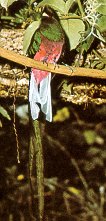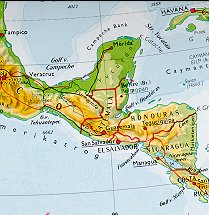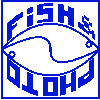













The Quetzalcichlid
Vieja (Cichlasoma) synspila (Hubbs,1935
The
army of fans of cichlids of Central-America were depleted considerably during
the last years. It is not so very difficult to find an explanation for it. Because
besides the the decrease of fanciers every discipline in our hobby has to contend
with, also their size matters. After all the greater part of these animals you
need to have at your disposal a tank of not insignificant size, if you intend
to accommodate them in a sensible way.
One of
the members of this cichlids out of the bulldozer class still fires the imagination
on account of his particular beautiful colors. Vieja
synspila he is called since the latest review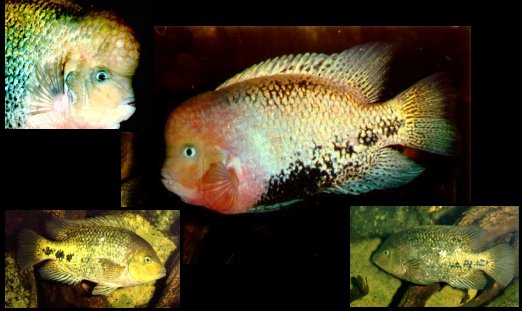
of the repository genus Cichlasoma.
With it we don't speak only one
of the most beautiful specious but of one of the larger sized ones to. Literate
indicates 30 cm, but personally I saw specimen that grew still some 10 centimeters
larger. Very impressive was the lump on the forehead in the masculine sex that
had been growing by than until decent proportions. Consider that because of a
sound pairing, they can be kept best in a larger group with social structure.
Than will be clear that, although it is a quiet and and moreover a peaceful species,
we would punish the animals with a accommodation smaller than 180 l x 60 b x 50
h cm.
Paul
Loiselle in 1978 named them with the appropriate name Quetzalcichlid, while in
its colors it reminds of the Quetzal, a bird living in Costa Rica and Guatemala.
The latter of these states even has admitted the Quetzal in her blazon. This magnificent
cichlid, it is common knowledge with the cichlid-lovers, originates from the Atlantic
coast of Central-America, from Rio Usumacinta until Belize. Something a lot of
them don't know, and that is perhaps a source for amazement, is the fact that
they are found in nearly undiluted sea water too. In the "Laguna's"
around Bacalar, a little town near the frontier with Belize, they occur in groups
of as much as 50 specimen. I translate for you what Ernst Sosna wrote about them
in Aquaristik Fachmagazin NR. 148 Aug./Sept. '99:"the water reflects
depending on the depth and the incense of light, every range of coloring between
light green and dark blue. On the roots stretching out in the water or the branches
that lay in the water bizarre depositions built up from sediments of limestone
build up themselves. My measurements confirm this evident indications of a high
degree of hardness.: GH 35o dH, KH 11o dH, pH 8,5. On windless days the water
is clear and allows to see until a depth of 5 m. Temperature fluctuated between
28 and 30o C" Unquote
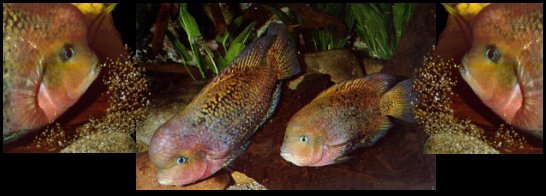 Yes,
they like digging. And plants are not allowed in their field of vision. Moreover
the animals are herbivorous. I.e. They are fond of a green leaf yet, without being
an old dog with life in it. So they don't leave plants where they are. One can
better decide not to use them, whereas vegetarian food may not be absent on the
menu. Abundant with carotene's; that intensifies the color.
Yes,
they like digging. And plants are not allowed in their field of vision. Moreover
the animals are herbivorous. I.e. They are fond of a green leaf yet, without being
an old dog with life in it. So they don't leave plants where they are. One can
better decide not to use them, whereas vegetarian food may not be absent on the
menu. Abundant with carotene's; that intensifies the color.
For the interior
of a tank for these animals, that don't make high demands, and also if necessary
for company I refer to the item current vivarium
and the foto-info pages, 33, 34, 35
and 36 with a nice selection of Central-American cichlids.
Aqualog:Southamerican cichlids III, Verlag A.C.S.
GmbH
Literatuur:Paul
V.Loiselle (1978): "Zwei lebende Edelsteine aus dem Land der Maya's"
Datz 2 (31)
Ernst Sosna: Weites Land und Wenig Wasser. Yucatan.TI, Aquaristik
Fagmagazin nr 146 August/Sepember 1999
Wolfgang Staeck en H. Linke:
Amerikanische
cichliden II Tetra-Verlag
Wolfgang Staeck: Handboek voor cichlidenliefhebbers
Thieme Zutphen
